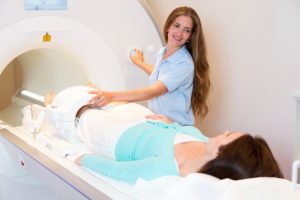 A new study from the University of Texas Arlington’s College of Nursing and Health Innovation has found an easier and less invasive method for measuring oxygen consumption in the legs of heart failure patients, providing insight into the different forms of heart failure.
A new study from the University of Texas Arlington’s College of Nursing and Health Innovation has found an easier and less invasive method for measuring oxygen consumption in the legs of heart failure patients, providing insight into the different forms of heart failure.
While traditional methods of measuring the blood flow and oxygen extraction and consumption in the leg requires invasive measures (like inserting a catheter into an artery and vein), researchers have found that they can measure these levels using an MRI.
Advertisement
The purpose of the study was to observe whether patients with different forms of heart failure experienced different levels of oxygen consumption in their legs, and what it may mean for their recovery.
To conduct the study, researchers gathered ten older adults who had suffered heart failures with either larger, dilated hearts that did not pump blood properly, or larger, stiff hearts that could not properly relax after exercise. Both forms of heart conditions have a high mortality rate. The team used an MRI technique to measure the blood flow and oxygen consumption in participants’ legs after four minutes of continuous knee extension exercises. The results showed that the leg blood flow and oxygen uptake recovery took longer in the participants with dilated hearts, compared to those with stiff hearts.
Mark Haykowsky, the senior author of the study, commented on these results, stating, “This study is an important breakthrough because we were able to distinguish between different groups of heart failure patients. If we’re able to differentiate between these heart failure groups then in the future we could target therapies aimed at increasing blood flow to their muscles and improve their exercise capacity. Fatigue and exercise intolerance are cardinal features in heart failure.”
The success of this study in being able to differentiate between certain type of heart failure patients may open the door for more specific and personalized treatment strategies to aid in recovery. The different characteristics of each group may mean that they respond differently to certain treatment methods, and what may prove beneficial to those who have dilated hearts may not work as well for those who have stiff hearts. Haykowsky and his colleagues plan to further test this technique on a larger range of heart failure patients.
Related: Heart failure and heart attack risk increases in people with insomnia: Study
